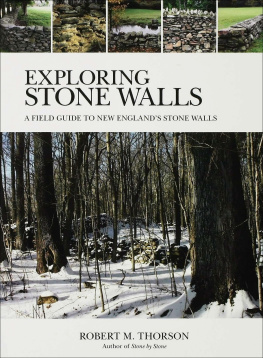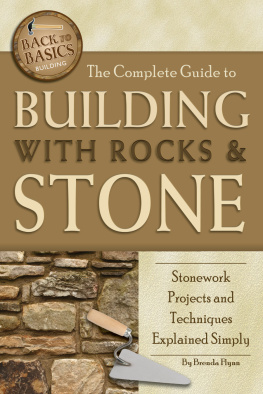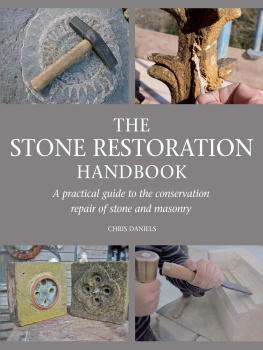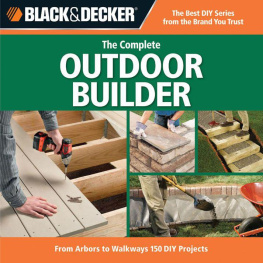
Copyright 2017 by Kevin Gardner
All photos by Edith W. Currier
All rights reserved
For information about permission to reproduce selections from this book, write to Permissions, The Countryman Press, 500 Fifth Avenue, New York, NY 10110
For information about special discounts for bulk purchases, please contact W. W. Norton Special Sales at specialsales@wwnorton.com or 800-233-4830
COVER DESIGN Nick Caruso Design
COVER PHOTOGRAPH kevinmwalsh/iStockphoto.com
The Countryman Press
www.countrymanpress.com
A division of W. W. Norton & Company, Inc.
500 Fifth Avenue, New York, NY 10110
www.wwnorton.com
978-1-58157-430-2 (pbk.)
978-1-58157-431-9 (e-book)
DEDICATION
For Ruth and Derek Owen
Farmers, Teachers, Family.
CONTENTS

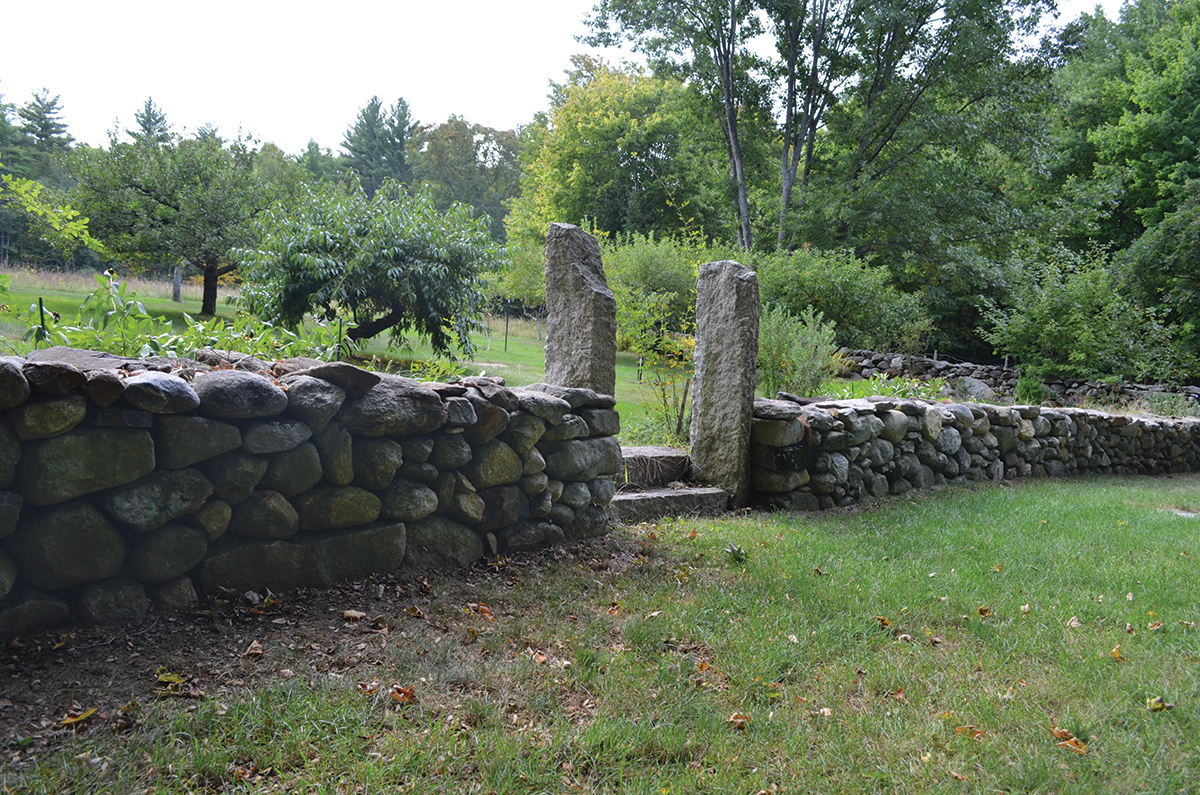
Antique fence posts and a stepped opening break this double-faced wall to give access to the orchard it helps define.
Why This Book?
_____________
There is no shortage of books, pamphlets, articles, and online instruction about building things with dry-laid stone. Most of these resources will teach you the basic principles of the craft in a very short time. Its easy for them to do this because the principles are so simpleand so few. Lay the individual stones of each succeeding course over the joints between stones in the course below. Place each stone in a solid, stable position, so that it cannot rock or shift when touched. Dont leave unfilled space. Be mindful with each placement of the courses yet to come. Work from the wall to the pile, not the other way around. Build up a projects interior as carefully as you build up the stones that show, so the structure will be fully self-integrated. And so on.
Tidy photographs or drawings accompany these prescriptions. They invariably show crowds of obedient, well-shaped stones, pre-selected for their agreeably docile dimensions and easily interlaced in consistently thick, deep rows over one another as though by predestination. Stones such as these make rules like two over one, one over two perfectly clear.
But across much of New England, stones such as these do not exist in anything like the quantities that instructional illustrations imply. Instead, they appear with only intermittent frequency among enormous supplies of rounded misshapen lumps, uneven trapezoidal shards, cloven cannonballs, and a thousand other forms utterly estranged from anything to do with flatness or regularity. How, for instance, can you lay one over two when the two are so dimensionally unlike each another that they cant offer a shared surface on which the one can rest? The essence of New England wall building, then, has little to do with technique itself, which is essentially the same the world over, but with the adaptation of technique to a chaotically obstreperous stone supply that threatens to defeat instructors as readily as it does would-be students of the craft. New Englands rounded granite, concedes one well-known manual, is a real challenge. Thats all it has to say on the subject.
Avoiding the complexities of trying to build walls with stones shaped like footballs, eggs, bushel baskets, and asteroids is easier than it used to be. Were no longer trying to clear off the ground for farming while simultaneously building our walls, so we can afford to select the stones that help and dismiss the ones that dont. The trouble is that the builders who established the style were trying to imitate didnt enjoy that luxury. Their efforts to use everything that came to hand, to integrate the bizarre with the businesslike, resulted in a distinctly regional style. Those who wish to reproduce that style have no choice but to learn how the old-timers did it if they want their own work to display the traditional, rough-and-ready integrity of the walls that came to define our landscape.
The challenges are equally unavoidable for instructors. A book that attempted to cover every single contingency that could arise when trying to fit New Englands mess of mismatched stone into stoutly coherent structures would be a thousand pages longand even that might not be enough. Furthermore, the New England style did not simply emerge and remain constant throughout the roughly two-hundred-year period when our enormous network of walls and other structures was largely completed. Beginning in the mid-seventeenth century as a purely practical response to the twin needs for fencing and land-clearing, it developed by the early nineteenth century into a complex marriage of the useful and the symbolic, a regional specialty that expanded its stylistic range as the tastes, motivations, and objectives of its practitioners also changed. Any instruction in the basics of the style is going to have to take these alterations into account if it hopes to create the fullest possible picture of what can be done with New England stonework today.
This is a book, then, that lays out the familiar fundamentals of wall buildingand their regional adaptationsentirely from a New England builders point of view. It addresses site preparation, acquisition and handling of materials, construction techniques both general and specialized, tools and equipment, and ways of managing the learning process. Its illustrations feature typical mixtures of good and bad stone, and they draw distinctions, both technical and visual, among the varied New England sub-styles, from the most primitive to the most discriminating.
The point of it all is to endow you with a sound basis for acquiring the experience that no instruction, however detailed, can provide. Theres no shortcut to expertise in this craft; though the curve may be shorter for some than for others, repetition and practice are the only things that will eventually reward you with genuine skill. This book can point you in the right direction, teach you to avoid wastes of time and energy, and alert you to common pitfalls and dubious decisions. It can show you the difference between a wall thats built to last and one that is not. What it cannot do is tell you which stone to put where, next. That, you will have to manage by yourself, with your own eyes and your own hands. No two builders, even highly skilled ones, build their walls exactly the same way. Like the dialogue in a Shakespeare play or the language of the US Constitution, the tenets of dry-laid stonework are subject to interpretation, to personal preference, even to the variable dictates of the stone itself. Discovering those things, while also acclimating yourself to the crafts purely physical demands, the feel and behavior of its materials, and the applied art of seeing what is in front of you, with all its implications and possibilities, is ultimately a process of self-teaching. In New England, where every stone wall, however modest, and every builder, however inexperienced, joins a glorious tradition, these discoveries are only part of your reward.
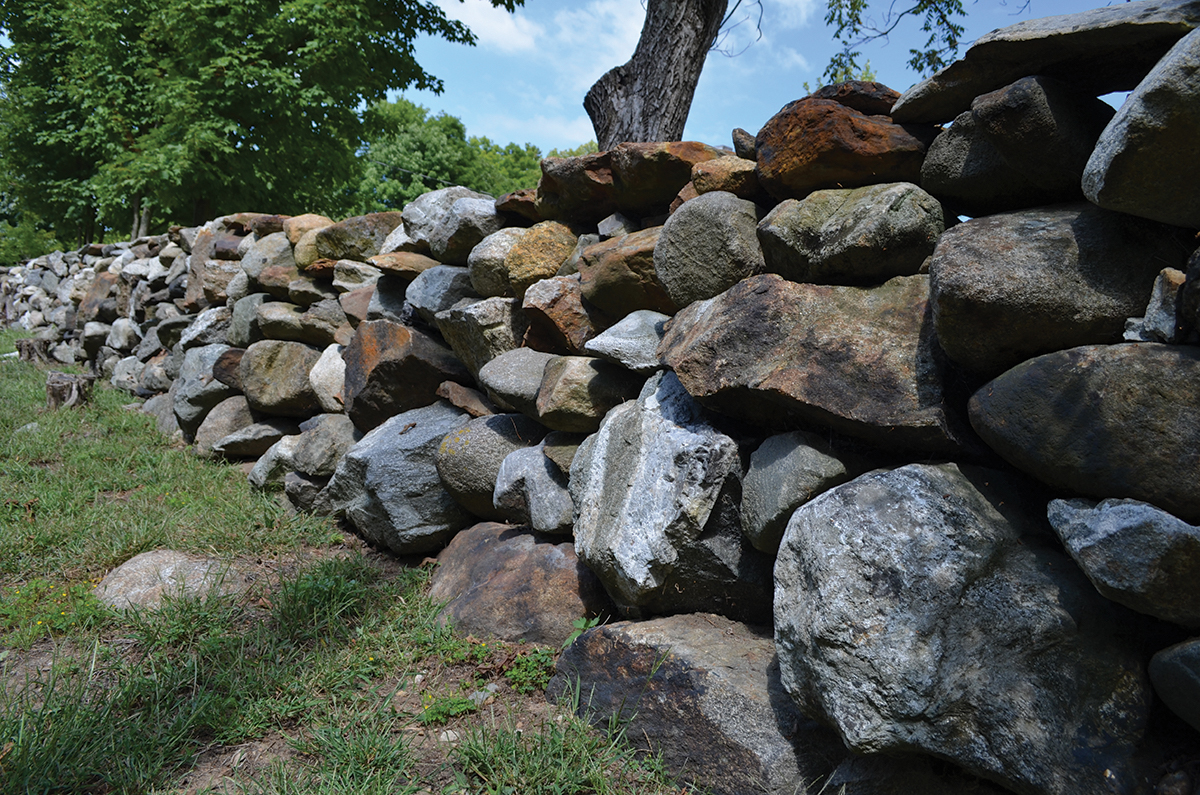
The ragged surface of a restored single-stack wall makes a forbidding barrier.
Please dont make it look too nice!
_____________
Next page



